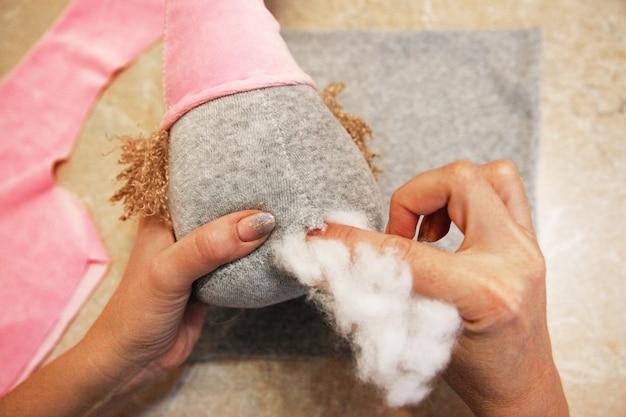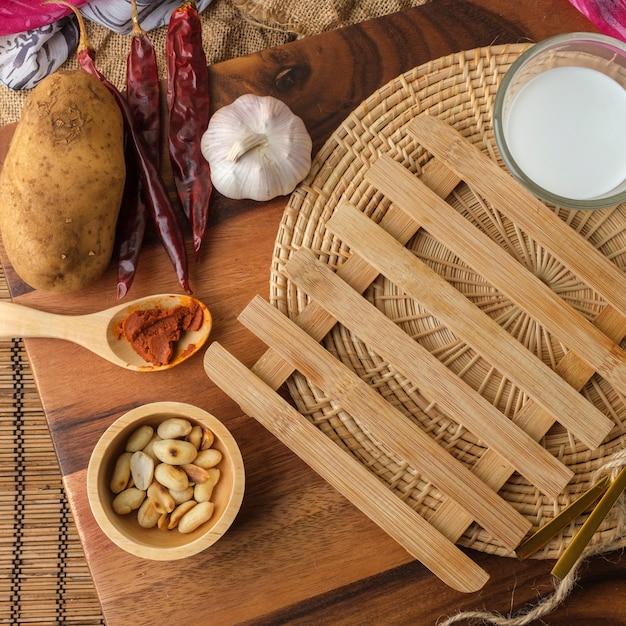Whether you’re dealing with muscle pain, period cramps, or simply looking for a way to stay warm during winter, a heating pad can be a game-changer. But what if you don’t have rice on hand to make a DIY heating pad? Don’t worry; you can still enjoy the comforting warmth with a few creative alternatives. In this blog post, we’ll explore different options for making a DIY heating pad without rice.
Can you use dried beans for a heating pad? What about corn or wheat? And how do you make a heating pad without rice in the microwave? We’ll answer all these burning questions and more. Join us as we delve into the world of DIY heat therapy, uncovering the best fillings for heat packs, explaining the benefits of various materials, and sharing easy step-by-step instructions to create your own warm compresses at home. So, grab your favorite socks and let’s get started on your journey to cozy relief!
How to Create Your Own DIY Heating Pad without Rice
Are you feeling chilly and in need of a cozy heating pad, but you don’t have any rice lying around? Don’t worry, because we’ve got you covered. In this guide, we’ll show you how to make a DIY heating pad without using rice. So grab your materials and let’s get started!
Materials You’ll Need
Before we dive into the nitty-gritty of making your heating pad, let’s gather all the materials you’ll need. Don’t worry; these items are probably sitting right under your nose!
-
A Clean Sock: Find a sock that has been abandoned by its pair, so you won’t feel guilty about repurposing it. Make sure it’s clean and doesn’t have any holes that could cause a mess.
-
Uncooked Grains: While we’re avoiding rice in this tutorial, we have a variety of options to choose from. You can use wheat, barley, buckwheat, or even lentils. Embrace your creativity and explore various grain options!
-
Essential Oils (Optional): If you want to enhance your heating pad’s soothing power, consider adding a few drops of essential oils like lavender or eucalyptus. Not only will they provide a delightful aroma, but they can also help promote relaxation.
Creating Your DIY Heating Pad
Step 1: Fill the Sock with Grains
First things first, grab your chosen grains and fill up the sock with them. You’ll want to leave a little bit of room, so the grains have space to move around and provide the perfect amount of comfort to your aching muscles.
Step 2: Tie a Knot
Once the sock is filled to your liking, tie a tight knot to seal the deal. You don’t want those grains escaping and wreaking havoc on your sofa, do you? We thought not.
Step 3: Test the Microwavability
Before popping your new heating pad into the microwave, make sure it’s microwavable by giving it a quick test. Microwave the sock on high for 30 seconds to see if it heats up. If it does, great! If not, double-check that you used the right materials and try again.
Step 4: Heat and Enjoy!
Now that your heating pad has passed the microwavability test, it’s time to let it work its magic. Pop it in the microwave for 1-2 minutes (check your microwave’s wattage for precise time). Once it’s nice and toasty, place it wherever you need the comforting warmth and relax.
Remember to exercise caution when handling your DIY heating pad, as it can get pretty hot. Always test the temperature on the back of your hand before applying it to your body.
Who knew making a DIY heating pad without rice could be so simple and fun? Now you can enjoy the coziness and comfort without having to rush to the store or wait for rice to cook. So go ahead, gather your materials, and create your very own microwavable heating pad. Your chilly nights and sore muscles will thank you, and you’ll be toasty warm in no time!
FAQs About DIY Heating Pads
Can you use dried beans for a heating pad?
Yes, you can definitely use dried beans as a filling for your DIY heating pad. Beans retain heat well and can provide soothing warmth. Just make sure to choose beans that are large enough not to fall out of the fabric or sock you’re using.
What is a rice sock?
A rice sock is a simple and effective homemade heating pad made by filling a sock with rice and heating it in a microwave or oven. The rice inside the sock retains heat and releases it slowly, providing comfort and warmth when applied to the body.
What can you put in a sock to make a heating pad?
Aside from rice, you can use a variety of other materials to fill your sock and make a heating pad. Some popular alternatives include dried beans, flaxseeds, cherry pits, corn, or even wheat. Just ensure that the filling you choose can withstand the heat source you plan to use.
Can you put heat packs in the oven?
Most commercial heat packs are not designed to be heated in the oven, as they may contain materials that can melt or ignite under high temperatures. It’s important to carefully read the instructions provided by the manufacturer to determine the proper heating method for your specific heat pack.
How do you make a rice heating pad?
To make a rice heating pad, you’ll need a clean sock and some uncooked rice. Fill the sock with the rice, leaving enough room for the rice to move around and conform to the body. Tie or sew the end of the sock securely, and then heat the sock in the microwave for a few seconds until it reaches the desired warmth.
What kind of corn do you use for heating pads?
When using corn as a filling for a heating pad, it’s best to use whole kernel feed corn. This type of corn is larger and more durable than popcorn or cornmeal, allowing it to retain heat effectively. You can usually find whole kernel feed corn at farm supply stores or online.
Where do you put a heating pad for cramps?
For menstrual cramps or abdominal discomfort, place the heating pad on your lower abdomen or lower back. The heat helps relax muscles, improve blood flow, and alleviate pain. Remember to use a fabric barrier, such as a towel or cloth, between your skin and the heating pad to prevent burns or discomfort.
How do you make a heating pad without rice in the microwave?
If you prefer not to use rice, you can still make a heating pad for your microwave. Other suitable fillings include corn, flaxseed, or dried beans. Follow the same steps as with a rice heating pad, ensuring the chosen filling is microwave-safe and can retain heat effectively.
What is the best filling for heat packs?
The best filling for a heat pack depends on personal preferences. Rice, corn, flaxseed, and dried beans are commonly used fillings that retain heat well. Some people also find herbs like lavender or chamomile mixed with their filling to add a pleasant fragrance and promote relaxation.
How do you make a warm compress at home?
Making a warm compress at home is easy. Take a clean cloth and soak it in warm water. Wring out the excess water and fold the cloth to a suitable size. Apply the warm compress to the desired area for soothing relief. You can also enhance the experience by adding a few drops of essential oils to the water.
How do you make a natural heating pad?
To make a natural heating pad, choose a fabric or sock that you find comfortable against your skin. Fill it with organic materials like rice, flaxseed, cherry pits, or natural corn. These materials are free of chemicals and provide a safe and eco-friendly option for your homemade heating pad.
What kind of rice do you use for heat packs?
Regular white rice or long-grain rice is commonly used for heat packs. Avoid using instant rice, as it has been precooked and may not retain heat as well. Also, remember to store your heat pack in a cool, dry place when not in use to prevent any potential moisture build-up.
Why do corn bags not pop?
Corn bags used in heating pads are made from whole kernel feed corn, which is a type of corn that has a lower moisture content than popcorn kernels. The low moisture content helps prevent the corn from popping when heated, making it safe and suitable for use in heating pads.
How long should you lay on a heating pad?
It’s recommended to limit the use of a heating pad to 20 minutes at a time. Prolonged exposure to heat can potentially cause burns or skin irritation. Allow your skin to cool down for at least 20 to 30 minutes before applying the heating pad again.
Can I microwave a sock?
While it is generally safe to put a sock filled with a microwave-safe filling, such as rice or corn, in the microwave, always exercise caution. Ensure the sock is clean and has no metallic elements. Additionally, never leave the microwave unattended while heating the sock to avoid any potential risks.
What kind of beans do you put in a heating pad?
You can use a variety of dried beans as fillings for your DIY heating pad. Kidney beans, black beans, navy beans, or lentils are all suitable options. Choose beans large enough to prevent them from escaping through the fabric, and ensure they are thoroughly dry before use.
How long does it take to cook dry beans?
Cooking times for dry beans vary depending on the type and freshness of the beans. Generally, you can soak dry beans overnight and then cook them for approximately 1 to 2 hours until they become tender. Refer to specific cooking instructions or recipes for more accurate cooking times.
Do humans eat field corn?
While field corn is primarily grown as feed for livestock, some types of field corn, known as “dent” or “flint” corn, are also consumed by humans. Field corn is often processed into cornmeal, corn flour, or used in various corn-based products, such as tortillas, corn oil, and corn chips.
How do you make a heating pad out of corn?
To make a heating pad using corn, select dried whole kernel feed corn, which can be found at farm supply stores. Sew a fabric pouch or use a sock to contain the corn, leaving enough room for movement. Heat the corn-filled pouch in the microwave or oven, and it’s ready to provide comforting warmth.
What wheat is used in heat packs?
Wheatberries or cherry pits are commonly used as fillings for heat packs. Wheatberries are small, hard wheat kernels that retain heat well, making them ideal for heat pack applications. Cherry pits also retain heat effectively and can add a pleasant natural scent to your heat pack.
Does rice in a sock help cramps?
Yes, using a rice-filled sock as a heating pad can help alleviate cramps. The warmth from the rice-filled sock helps relax the muscles, improve blood flow, and reduce pain associated with menstrual or abdominal cramps. Place the sock on the affected area and enjoy the soothing relief.
How do you make a heating pad for cramps without rice?
If you don’t have rice on hand, you can easily create a heating pad for cramps using alternative fillings. Consider flaxseeds, dried beans, cherry pits, or corn as suitable replacements. Follow the same steps as mentioned earlier to create your homemade heating pad, tailored to your specific needs.

